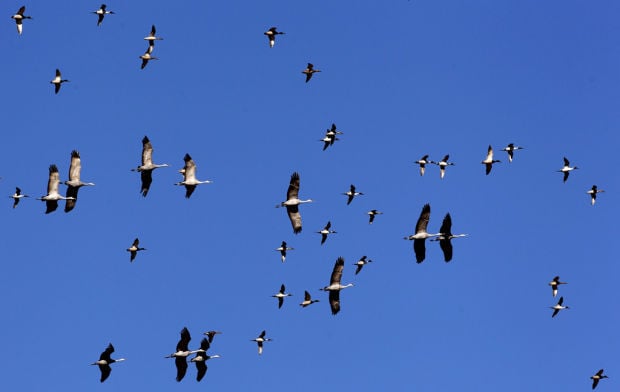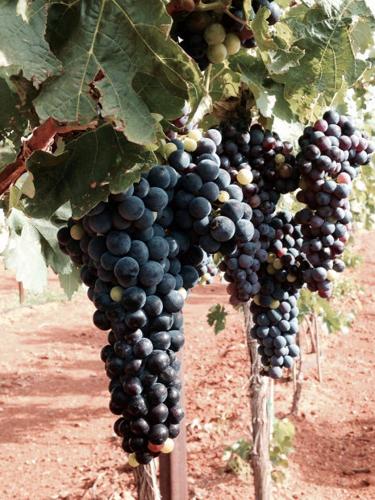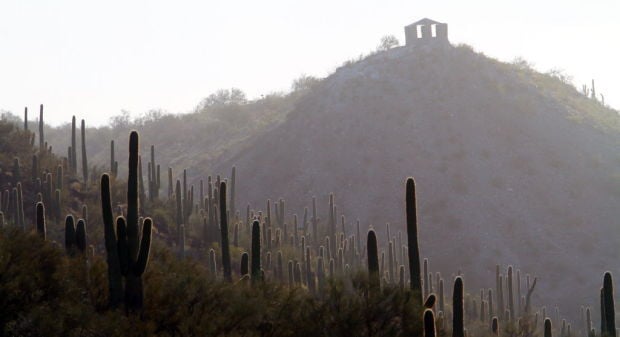Faced with route choices for a high-voltage power line that could kill sandhill cranes or wreck views for Willcox-area wine tasters, two federal agencies are picking a course they hope will do neither.
In a new final environmental impact statement, the agencies’ preferred alternative would route the $800 million Southline Transmission Project near crane habitat in the Willcox Playa south of Willcox but avoid an area that is a centerpiece of the state’s wine industry.
That is a huge victory for the wine growers, who rounded up support for their cause from U.S. Sens. John McCain and Jeff Flake and U.S. Rep. Martha McSally, who represents the Willcox area.
At the same time, the Dallas-based power company that would build the project and the Arizona Game and Fish Department have agreed to move an artificial lake where cranes congregate near the Southline route a mile away. Hunt Power LP has agreed to pay to move the 30-acre Crane Lake away from the playa and the power line, whose towers will average 140 feet tall — roughly 10 stories.
The Southline project would include a new 240-mile segment stretching from an area southwest of Las Cruces, New Mexico, to an existing substation south of Willcox. From there, an upgraded, rebuilt line would run 120 miles west, through Tucson, to a second substation north of Marana along Interstate 10.
As part of the new environmental impact statement, the power company will move the existing line off its current location on Tumamoc Hill to a spot west of the hill, to reduce visual impacts on the century-old desert research area.
While environmentalists have had concerns about the line’s potential impacts on birds, they generally consider it more benign than the planned $2 billion SunZia power line that would cross a neighboring area. SunZia would cut through the heart of the Lower San Pedro River Valley en route from its starting point in rural central New Mexico to the Eloy area of Pinal County. The federal government has approved it, but it still faces hurdles at the state government level in both states.
Sometime after a 30-day period passes following last week’s publication of the final environmental report on the Southline project, the U.S. Bureau of Land Management and the Western Area Power Administration will make a final decision.
“If this decision holds … it means that the vineyards and wineries can continue to thrive and grow and contribute to the local economy,” said Mark Jorve, whose Zarapara Vineyard lies in the path of the power line route that BLM abandoned, about 15 miles south of Willcox.
“It also means that the birders who come to the area to see the sandhill cranes will enjoy an updated, accessible viewing area just a few miles south of Willcox at the pond called Crane Lake, maintained by Arizona Game and Fish, all paid for by Southline,” Jorve said.
BLM spokesman Dennis Godfrey agreed with Jorve, calling the latest agency proposal “a win-win for everyone.” Game and Fish’s Jim DeVos said this outcome shows that by collaborating, “all of the interests were able to meet and resolve conflicts and in the end, there is an amazing benefit to many wildlife species and to the public that enjoys them.”
Controversy over the power line started when federal agencies published a draft environmental impact statement in April 2014, proposing to route the line very close to the Willcox Playa, a usually dry lakebed that typically draws tens of thousands of cranes every winter.
The Game and Fish Department objected, concerned this route could dramatically increase crane mortality because it is so close to Crane Lake, recalled DeVos, Game and Fish’s assistant director for wildlife management.
So in December 2014, BLM wrote a letter to landowners south of Willcox saying it was considering a modified route that would cut through the wine country, seven or eight miles to the east.
But wine growers said the sight of a massive power line would discourage customers from driving there for wine tasting. At stake was the future of the Willcox Bench, an area where industry officials say 50 percent of all Arizona wine grapes are grown, said Jorve and Rod Keeling, president of the Arizona Wine Growers Association.
The bench is a slightly elevated area, about 150 feet above the agricultural area known as Kansas Settlement, where gravity’s force allows cold air to slide downhill away from the vineyards in the springtime, reducing the risk of damaging frost, Keeling said.
The line proposal “brought everything to a halt out here,” Jorve said.
“The wine industry is not just a vineyard industry but a tourist industry. You have a lot of wineries, related businesses and tasting rooms,” he said. “The Willcox Bench has three tasting rooms now and six more in the works. But they’re on hold now. No one is going to build a tasting room underneath a power line.”
The wineries questioned the legality of BLM’s proposal, since the bureau had proposed the route without comment from wine growers or anyone else.
Federal law requires environmental analysis of any new route to be considered, which hadn’t happened in this case, wrote Robert Lynch, attorney for the wine growers’ association, in an April 2015 letter to BLM.
In August, McCain, Flake and McSally wrote BLM seeking more public comment on the route and an analysis of its effects on the wine industry. Officials of BLM, Game and Fish and other agencies also met and toured the winery area, and changed their minds.
Game and Fish is confident the new arrangement will minimize the line’s impact on cranes, in part because the existing Crane Lake will be dried up.
The state agency also will be developing wetlands on more than 10 acres on the same property that contains the lake, for the purpose of managing native fish, frogs and other amphibians, DeVos said.
“The only reason the cranes are there is because of the lake,” DeVos said. “By moving the lake away from the power line, we move the cranes from the power line. Cranes like open water.”
Vineyard owner Jorve said he’s not counting on anything until the final decision appears, but that as it’s going now, he believes the wine industry will resume its growth.
“It’s tough to find spots like this in Arizona. This area, the Willcox Bench, is unique in the whole state.”







